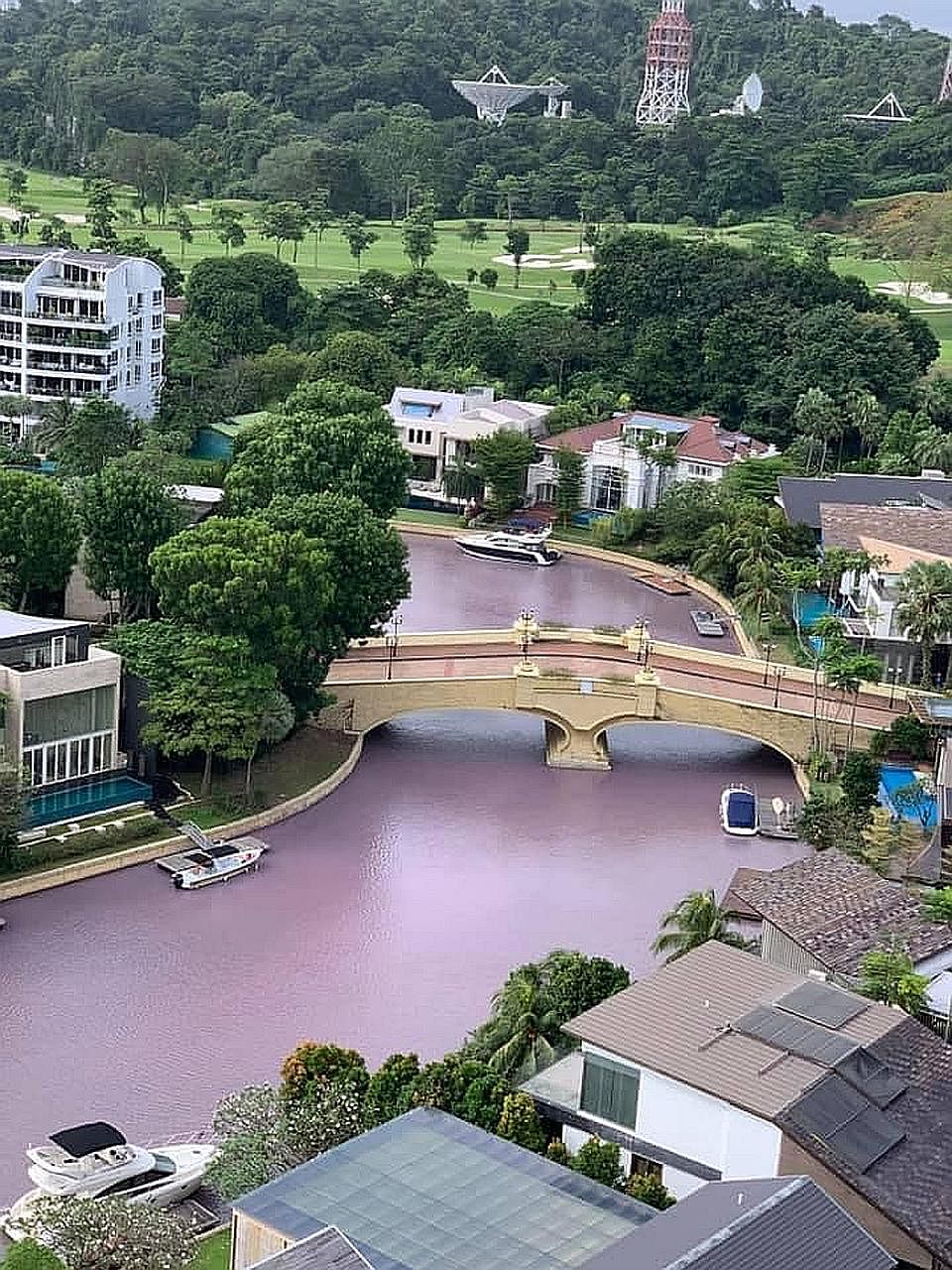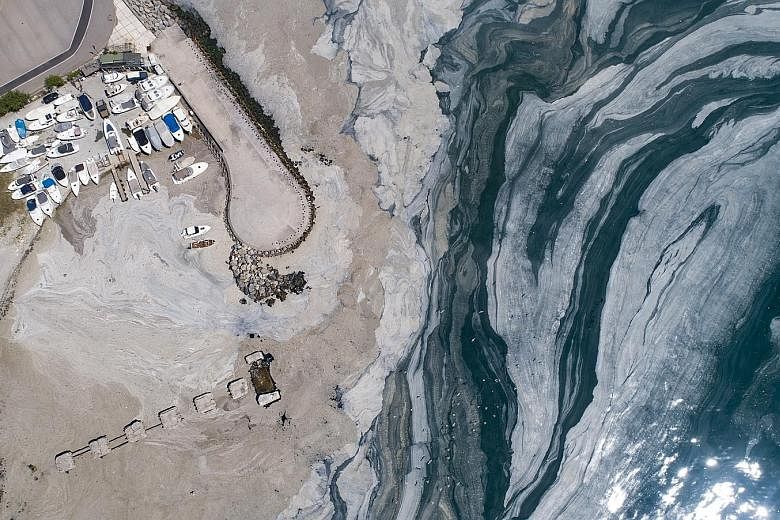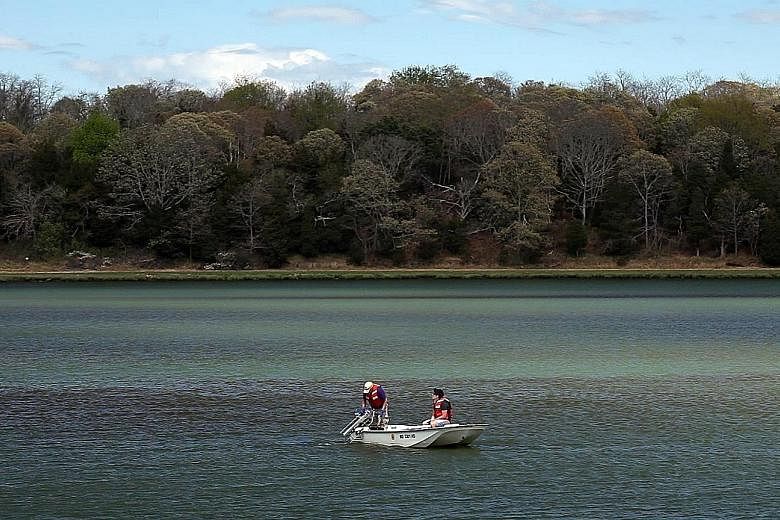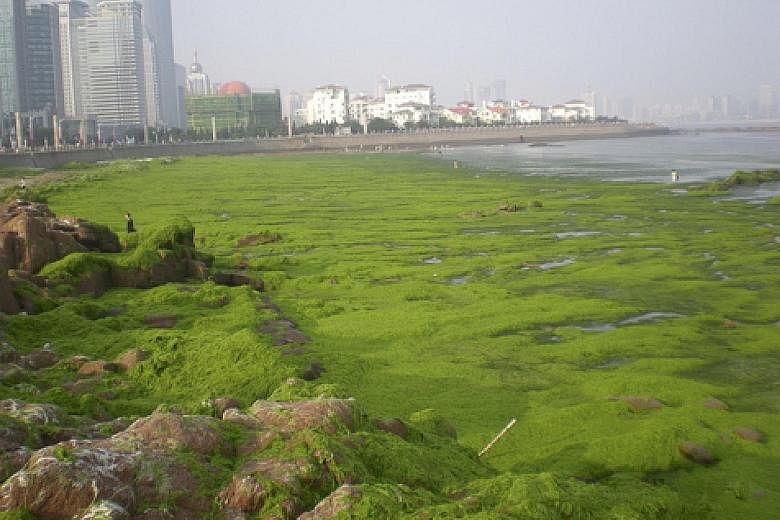The world is on alert for microscopic sea-dwelling algae that can multiply and smother the seas, causing swathes of the ocean to change colour and thousands of dead fish to bob on the surface.
This ocean hazard - called harmful algal blooms - is a global phenomenon that is becoming more frequent with increasing fisheries, coastal development and marine exploitation, a first-of-its-kind study by the United Nations has found.
Over 9,500 blooms were reported globally over the past 33 years, the study, led by Unesco's Intergovernmental Oceanographic Commission, has found.
Although harmful algal bloom events have increased in some regions, there has been no significant change in South-east Asia.
But aquaculture - a key cause of algal blooms - has risen 16-fold from 1985 to 2018, with the largest increases seen in South-east Asia, and South and Central America.
The seven-year study by 109 scientists, published last week, said the increase in coastal fish farms has been a key driver for disastrous economic impacts from harmful algal blooms.
Such blooms are mainly caused by changing water and environmental conditions, such as rainfall patterns and the loading of nutrients into the seas.
In fish farms, fish feed and waste materials are additional nutrients released into the sea. Microalgae devour the nutrients and multiply drastically, eventually causing fish to die from a lack of oxygen.
Singapore - an island-state with its coasts bustling with fish farms, water treatment plants and land reclamation - has not been spared from harmful algal blooms.
In mid-January, residents of Sentosa Cove were astounded to see a waterway turn pinkish-purple. A week earlier, throngs of dead fish were seen near the banks.
A local review paper this year on harmful algal blooms and aquaculture listed 22 reported events between 1987 and 2017. Most occurred in the Strait of Johor, where most of the island's over 100 sea-based fish farms are located.
There are various reasons the strait is susceptible to harmful algal blooms. For instance, a 2014 study noted that seasonal monsoons can change the water salinity, affecting microalgae growth.

The Singapore Food Agency (SFA) will be studying how fish farming impacts the water quality of the East Johor Strait.
In the future, climate change will also drive up the frequency and severity of harmful algal blooms, since warmer surface waters will not mix properly, and algae will grow thicker and faster.
"Climate change, anthropogenic impacts and environmental impacts are contributing worldwide to this phenomenon, and there's no way you are going to have fewer algal blooms unless you stop dumping nutrients into the water. And I don't see that happening right away," said Associate Professor Federico Lauro from Nanyang Technological University's Asian School of the Environment.
However, the UN study noted that at this point, the widely stated view that harmful algal blooms are on the rise throughout the world, perhaps due to climate change, is not confirmed.
In Singapore, aquaculture is here to stay as it is part of the country's vision of producing 30 per cent of its nutritional needs to boost food security.
The SFA has been encouraging sea-based fish farms to minimise the impact of blooms and other environmental issues by adopting high-tech farming methods. One such method is recirculating aquaculture systems in closed-loop fish farms, where seawater is constantly reused with hardly any waste discharged.




